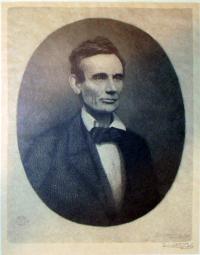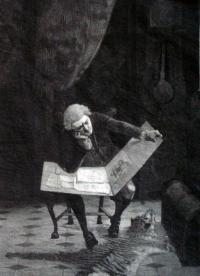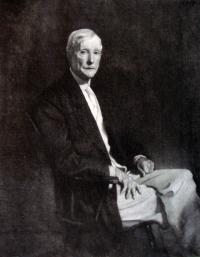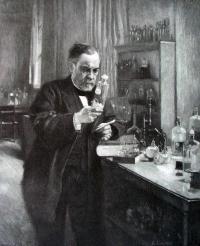

Timothy Cole (not to be confused with the painter Thomas Cole) was a “new school” reproductive wood engraver who made a career of reproducing famous works of art for Scribner’s Monthly. His technique, developed in the 1870s, involved painting a wood block with light-sensitive chemistry, then placing a photographic negative on the block, and developing out the image in a few minutes of sunlight. This allowed him to carve the block without redrawing the image and to create an ink print that had all the subtly of the continuous tone photograph. The technique is sometimes called “photoxylography.”
“Now the engraving is nothing, absolutely nothing,” wrote Cole. “It is the reproduction of the original alone that concerns me … [The engraver] must not speak his own words, nor do his own works, nor think his own thoughts, but must be the organ through which the mind of the artist speaks.”
“Old school” engravers deplored the “new school” kids. William James Linton wrote many articles against reproduction without interpretation, including “Art in Engraving on Wood,” Atlantic Monthly June 1879, criticizing Timothy Cole in particular. As often happens, the younger generation won out and most wood cutting from then on was done with the assistance of photography.

For further reading on the subject, see
Gerry Beegan, “The Mechanization of the Image: Facsimile, Photography, and Fragmentation in Nineteenth-Century Wood Engraving,” Journal of Design History 8 (1995): 257-274.
Tom Gretton, “Signs for Labour-Value in Printed Pictures After the Photomechanical Revolution: Mainstream Changes and Extreme Cases around 1900,” Oxford Art Journal 28 (2005): [371]-390.
Stephen P. Rice, “Photography in Engraving on Wood: On the road to the halftone revolution,” Common-Place 7, no. 3 (April 2007).
Nancy Carlson Schrock, “William James Linton and his Victorian History of American Wood Engraving,” in William J. Linton, American Wood Engraving: A Victorian History (Watkins Glen, N.Y., 1976).
Nancy Martha West, “Men in the Age of Mechanical Reproduction: Masculinity, Photography, and the Death of Engraving in the Nineteenth Century,” Victorian Institute Journal 27 (1999): [7]-31.
David Woodward, “The Decline of Commercial Wood Engraving in Nineteenth-Century America,” Journal of the Printing Historical Society 10 (1974-75): [57]-83.
